-
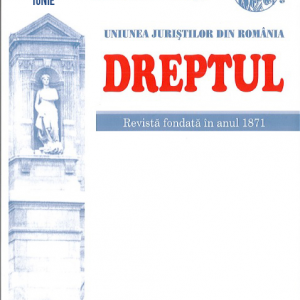 In this study, the author examines the possibility of including in Romania, in the private law contracts (civil or commercial), some hardship clauses, (the hard ship clause in the Anglo-Saxon law and in the foreign trade law), even if there is no explicit regulation in this respect in current Romanian positive law (there is an explicit regulation only in the new Romanian civil code – art. 1271 – , but this Code has not become effective yet and, at present, nobody knows when it will become effective). Further on, after defining the notion of “hardship clause”, the author, also taking into consideration the Romanian legal doctrine in the matter, examines the field of application, as well as the conditions of the hardship clause. Key words: Hardship clause in private law contracts; field of application and conditions in the current Romanian law.
In this study, the author examines the possibility of including in Romania, in the private law contracts (civil or commercial), some hardship clauses, (the hard ship clause in the Anglo-Saxon law and in the foreign trade law), even if there is no explicit regulation in this respect in current Romanian positive law (there is an explicit regulation only in the new Romanian civil code – art. 1271 – , but this Code has not become effective yet and, at present, nobody knows when it will become effective). Further on, after defining the notion of “hardship clause”, the author, also taking into consideration the Romanian legal doctrine in the matter, examines the field of application, as well as the conditions of the hardship clause. Key words: Hardship clause in private law contracts; field of application and conditions in the current Romanian law. -

-
 The penal clause originates in the principle of contractual freedom. According to this principle, the parties are free to conclude any contracts and to determine their contents, within the limits imposed by the law, the public order and the morality (Article 1169 of the new Civil Code). This study examines the penal clause from a historical perspective, starting from the Roman law, continuing with the French canon law, the Civil Code of 1864, and then reaching to the new Civil Code, as well as the definition of the penal clause, the object, the advantages and the disadvantages of including the penal clause into contracts. The study also makes an analysis of the penal clause in comparison to other institutions of civil law, by emphasizing the similarities and the differences.
The penal clause originates in the principle of contractual freedom. According to this principle, the parties are free to conclude any contracts and to determine their contents, within the limits imposed by the law, the public order and the morality (Article 1169 of the new Civil Code). This study examines the penal clause from a historical perspective, starting from the Roman law, continuing with the French canon law, the Civil Code of 1864, and then reaching to the new Civil Code, as well as the definition of the penal clause, the object, the advantages and the disadvantages of including the penal clause into contracts. The study also makes an analysis of the penal clause in comparison to other institutions of civil law, by emphasizing the similarities and the differences. -
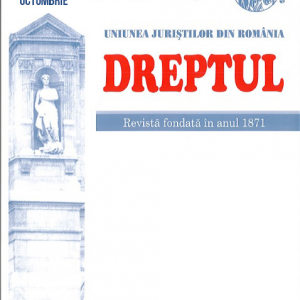 The new Romanian Civil Code (Law no. 287/2009, republished) contains a new concept, namely the sanction of clauses deemed unwritten, which are incident to all areas covered by the Civil Code. In this study, the author makes a comprehensive analysis of this new concept, concluding that we are faced with an autonomous sanction. Although it has an autonomous nature, with regard to its legal system, the author believes that this autonomous sanction is, by analogy, subject to the rules for invalidity.
The new Romanian Civil Code (Law no. 287/2009, republished) contains a new concept, namely the sanction of clauses deemed unwritten, which are incident to all areas covered by the Civil Code. In this study, the author makes a comprehensive analysis of this new concept, concluding that we are faced with an autonomous sanction. Although it has an autonomous nature, with regard to its legal system, the author believes that this autonomous sanction is, by analogy, subject to the rules for invalidity. -
 The study aims to present in a comparative manner the post-calculation clauses and the escalation clauses in international trade contracts, while presenting the main clauses of both categories, including the varieties of the well-known cost+fee clause. At the same time, the study gradually analyzes the structure of each type of clause, highlighting the main advantages and disadvantages that accompany the introduction of these clauses in trade contracts, both from the perspective of the owner and from the perspective of the contractor, who tries to transfer the risks to the owner, which in some situations may, paradoxically, even benefit from such a situation.
The study aims to present in a comparative manner the post-calculation clauses and the escalation clauses in international trade contracts, while presenting the main clauses of both categories, including the varieties of the well-known cost+fee clause. At the same time, the study gradually analyzes the structure of each type of clause, highlighting the main advantages and disadvantages that accompany the introduction of these clauses in trade contracts, both from the perspective of the owner and from the perspective of the contractor, who tries to transfer the risks to the owner, which in some situations may, paradoxically, even benefit from such a situation. -
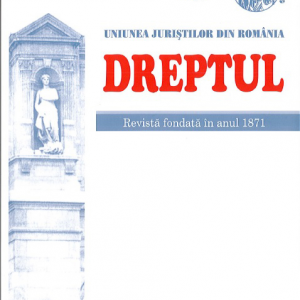 Cloud Computing is one of the most innovative technologies in the history of computing. It is radically changing the way how information technology services are created, delivered, accessed and managed. Cloud Computing enables the same services and user content to be delivered to any user device, whether a mobile phone, desktop or tablet computer. Cloud technology involves data storage at multiple data centers in different geographic locations. The evolution of computer technology is strongly related with the cybercrime phenomenon. Over the last decade, the number of crimes that involve computers and Internet has grown constantly. Criminal organizations try to be as efficient as possible and in order to make investigations difficult they are storing criminal data in foreign servers or in Cloud storage systems, and use cryptography and other data obfuscation techniques that hide their illicit activity. Cloud Computing offers criminals accessible means for committing cybercrime. In much the same way as cybercrime may be understood as a new way of committing traditional crimes such as fraud and theft, Cloud Computing presents criminals with new tools with which to commit these offences and many more. Researching this environment is a key element in understanding the new and more complex forms of cybercrime that occur today.
Cloud Computing is one of the most innovative technologies in the history of computing. It is radically changing the way how information technology services are created, delivered, accessed and managed. Cloud Computing enables the same services and user content to be delivered to any user device, whether a mobile phone, desktop or tablet computer. Cloud technology involves data storage at multiple data centers in different geographic locations. The evolution of computer technology is strongly related with the cybercrime phenomenon. Over the last decade, the number of crimes that involve computers and Internet has grown constantly. Criminal organizations try to be as efficient as possible and in order to make investigations difficult they are storing criminal data in foreign servers or in Cloud storage systems, and use cryptography and other data obfuscation techniques that hide their illicit activity. Cloud Computing offers criminals accessible means for committing cybercrime. In much the same way as cybercrime may be understood as a new way of committing traditional crimes such as fraud and theft, Cloud Computing presents criminals with new tools with which to commit these offences and many more. Researching this environment is a key element in understanding the new and more complex forms of cybercrime that occur today. -
 The present study aims to examine the law principles issue based on principles of doctrinal realities under which there are principles of law, general principles of law and specific principles of various branches of law. The 1st Article of The New Civil Code is a challenge for us because this text introduces customary legal and legal doctrine among the classic sources of law. The legal doctrine is recognized by the Civil Code as a work of philosophical synthesis which it can be valued only by the jurisprudence. All in all the general principles of law- the rule of law, equity and justice, legitimacy and legal regulations- are applicable to all branches of law.
The present study aims to examine the law principles issue based on principles of doctrinal realities under which there are principles of law, general principles of law and specific principles of various branches of law. The 1st Article of The New Civil Code is a challenge for us because this text introduces customary legal and legal doctrine among the classic sources of law. The legal doctrine is recognized by the Civil Code as a work of philosophical synthesis which it can be valued only by the jurisprudence. All in all the general principles of law- the rule of law, equity and justice, legitimacy and legal regulations- are applicable to all branches of law. -
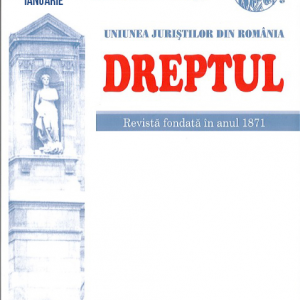 Based on historical considerations this paper analyses the need for a codification in the area of contraventions and argues in its favour. Taking stock of current issues revealed by relevant legislation and case-law, concrete suggestions are made with regard to the structure and provisions of such a statutory instrument. The author appreciates that a vigorous doctrinal debate would be needed in order to identify the best legal options.
Based on historical considerations this paper analyses the need for a codification in the area of contraventions and argues in its favour. Taking stock of current issues revealed by relevant legislation and case-law, concrete suggestions are made with regard to the structure and provisions of such a statutory instrument. The author appreciates that a vigorous doctrinal debate would be needed in order to identify the best legal options. -
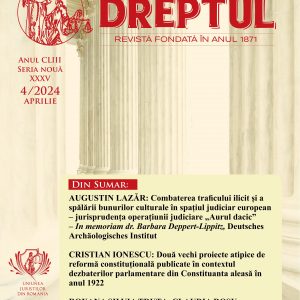
-
 Curtea Constituțională a pronunțat recent o decizie asupra constituționalității art. III, pct. a) și b) din Ordonanța de urgență a Guvernului nr. 70/2016 pentru modificarea și completarea Codului de procedură penală și a Legii nr. 304/2004 privind organizarea judiciară, admițând excepția în privința pct. b), cu opinie separată. Anterior și în mod similar, Curtea a pronunțat o decizie de admitere a neconstituționalității art. 27 din Codul de procedură civilă astfel cum fusese el interpretat de Înalta Curte de Casație și Justiție – Completul pentru dezlegarea unor chestiuni de drept1. Considerăm că ambele soluții ale Curții ridică probleme legate de efectele în timp ale unor decizii ale sale pronunțate anterior în aceeași privință, probleme la care, de altfel, face referire și opinia separată publicată la prima menționată, deși nu suntem întru totul de acord cu aceasta din urmă.
Curtea Constituțională a pronunțat recent o decizie asupra constituționalității art. III, pct. a) și b) din Ordonanța de urgență a Guvernului nr. 70/2016 pentru modificarea și completarea Codului de procedură penală și a Legii nr. 304/2004 privind organizarea judiciară, admițând excepția în privința pct. b), cu opinie separată. Anterior și în mod similar, Curtea a pronunțat o decizie de admitere a neconstituționalității art. 27 din Codul de procedură civilă astfel cum fusese el interpretat de Înalta Curte de Casație și Justiție – Completul pentru dezlegarea unor chestiuni de drept1. Considerăm că ambele soluții ale Curții ridică probleme legate de efectele în timp ale unor decizii ale sale pronunțate anterior în aceeași privință, probleme la care, de altfel, face referire și opinia separată publicată la prima menționată, deși nu suntem întru totul de acord cu aceasta din urmă. -
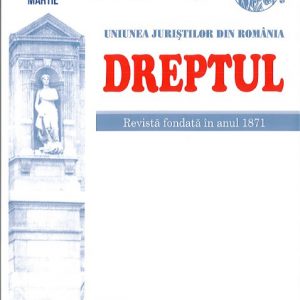 The Government Emergency Ordinance No 111/2010 has established in Romania the grant of the leave for raising children (also called parental leave), with the payment of the related allowance. This normative act represents the transposition, in the Romanian legislation, of Directive 2010/18/EU of the Council of 8 March 2010, without, however, also properly supplementing the (Romanian) Labour Code (the Law No 53/2003). Given this situation and also taking into account the relevant creative case-law of the Court of Justice of the European Union, the author makes an analysis of the regulations and of the practice in the field and, retaining some discrepancies, it comes to the conclusion that the provisions of the Emergency Government Ordinance No 111/2010 and of the Labour Code must be interpreted and applied in the light and in accordance with EU legislation and of the case-law of the Court in Luxembourg, the supplementation of the Labour Code being also required, so that the right of the employee to fully benefit by the rest leave, after taking the leave for raising children, be expressly provided in the Romanian legislation, a series of discussions and controversies being thus avoided.
The Government Emergency Ordinance No 111/2010 has established in Romania the grant of the leave for raising children (also called parental leave), with the payment of the related allowance. This normative act represents the transposition, in the Romanian legislation, of Directive 2010/18/EU of the Council of 8 March 2010, without, however, also properly supplementing the (Romanian) Labour Code (the Law No 53/2003). Given this situation and also taking into account the relevant creative case-law of the Court of Justice of the European Union, the author makes an analysis of the regulations and of the practice in the field and, retaining some discrepancies, it comes to the conclusion that the provisions of the Emergency Government Ordinance No 111/2010 and of the Labour Code must be interpreted and applied in the light and in accordance with EU legislation and of the case-law of the Court in Luxembourg, the supplementation of the Labour Code being also required, so that the right of the employee to fully benefit by the rest leave, after taking the leave for raising children, be expressly provided in the Romanian legislation, a series of discussions and controversies being thus avoided. -
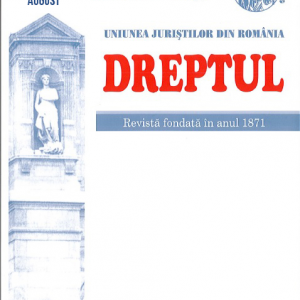 The author, having in view a recent controversy in the Romanian doctrine of labour law, resumes the analysis and reaches the following conclusion: • According to the Romanian Labour Code, the legal institution (of labour law) of the temporary labour contract (Article 88 of the Labour Code) is separate from the legal institution of posting (Article 45 et seq. of the same Code); • Conversely, the employee who, according to Article 88 of the Labour Code, has concluded with his employer a temporary labour contract, in order to be hired out to a user undertaking from another Member State of the European Union, has the status of posted employee, within the meaning of Directive 96/71.
The author, having in view a recent controversy in the Romanian doctrine of labour law, resumes the analysis and reaches the following conclusion: • According to the Romanian Labour Code, the legal institution (of labour law) of the temporary labour contract (Article 88 of the Labour Code) is separate from the legal institution of posting (Article 45 et seq. of the same Code); • Conversely, the employee who, according to Article 88 of the Labour Code, has concluded with his employer a temporary labour contract, in order to be hired out to a user undertaking from another Member State of the European Union, has the status of posted employee, within the meaning of Directive 96/71.
